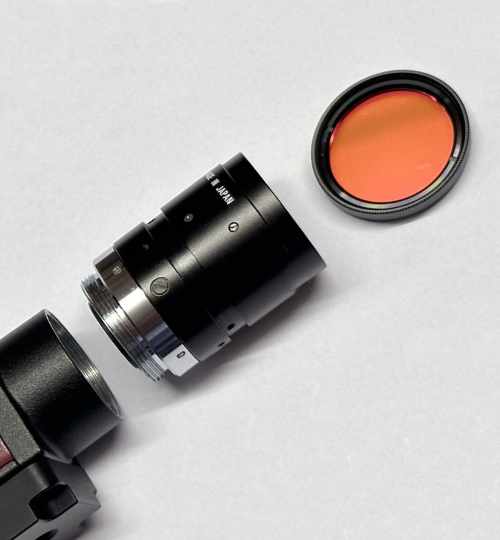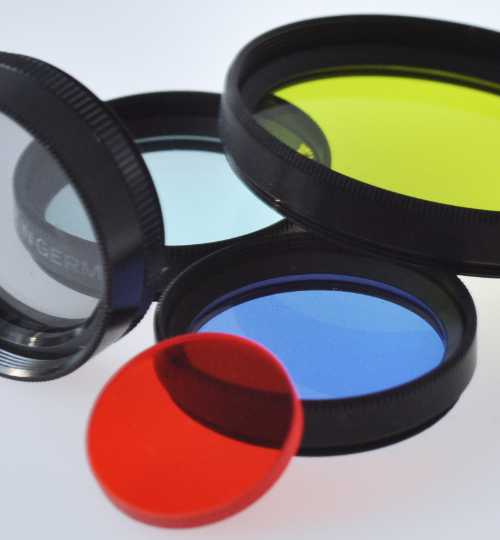
Optical Filter
Use of filters for industrial machine vision systems
Is this really needed?
One inexpensive means to optimise the image information is the use of optic filters. The basic idea in most cases is to enhance the contrast in the resulting image.
This can, for instance, be achieved by suppressing interfering wavelength ranges in the light spectrum in order that coloured features can be lightened up or darkened when using coloured lighting. Interfering effects of extraneous light can be avoided or the wavelengths of the light used can simply be limited to the extent that the camera sensor works at its optimum.
With the exception of light control films, they are usually mounted to the filter thread of the lens. If this is not available, special plug-on mounts are possible, too, e.g. for telecentric lenses. In case of some industrial cameras it can also be mounted between lens and sensor. The advantage is that the filter may then be rather small and thus cheaper than a very large filter in front of an objective with large front lens. However, this shall already be provided by the camera manufacturer. A provided clear glass filter / IR cut filter can be replaced by a special type.

Common filter types are:
1. Colour filters
Colour filters to emphasise or suppress specific wavelength ranges and colours
2. Grey filters
Grey filters as "sun shades" to reduce the overall brightness
3. Interference filters
Interference filters as band-pass filters for specific wavelength range
4. Polarising filters
Polarising filters to avoid reflections on test objects
5. Heat filters
Heat filters as protection against infrared and heat radiation
6. Light control film
Light control film to block diffuse background light
Need to buy the right filter?
Vision-Doctor.com is a private, independent, non-commercial homepage project and not a technology provider or system integrator. Suitable technologies and further professional support can be obtained from the companies & partners listed below.
If necessary, I will be happy to provide a quick recommendation, contacts and brief information.















